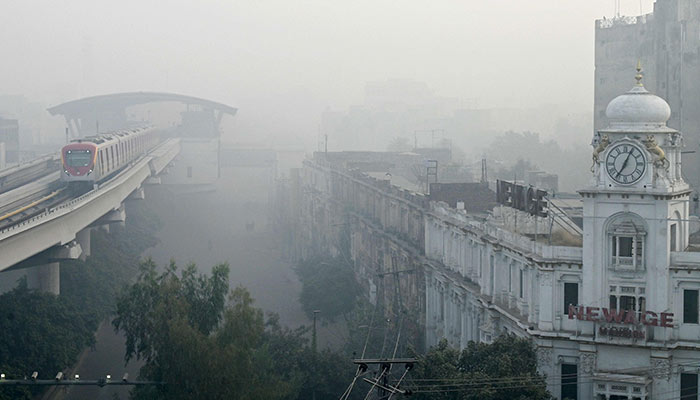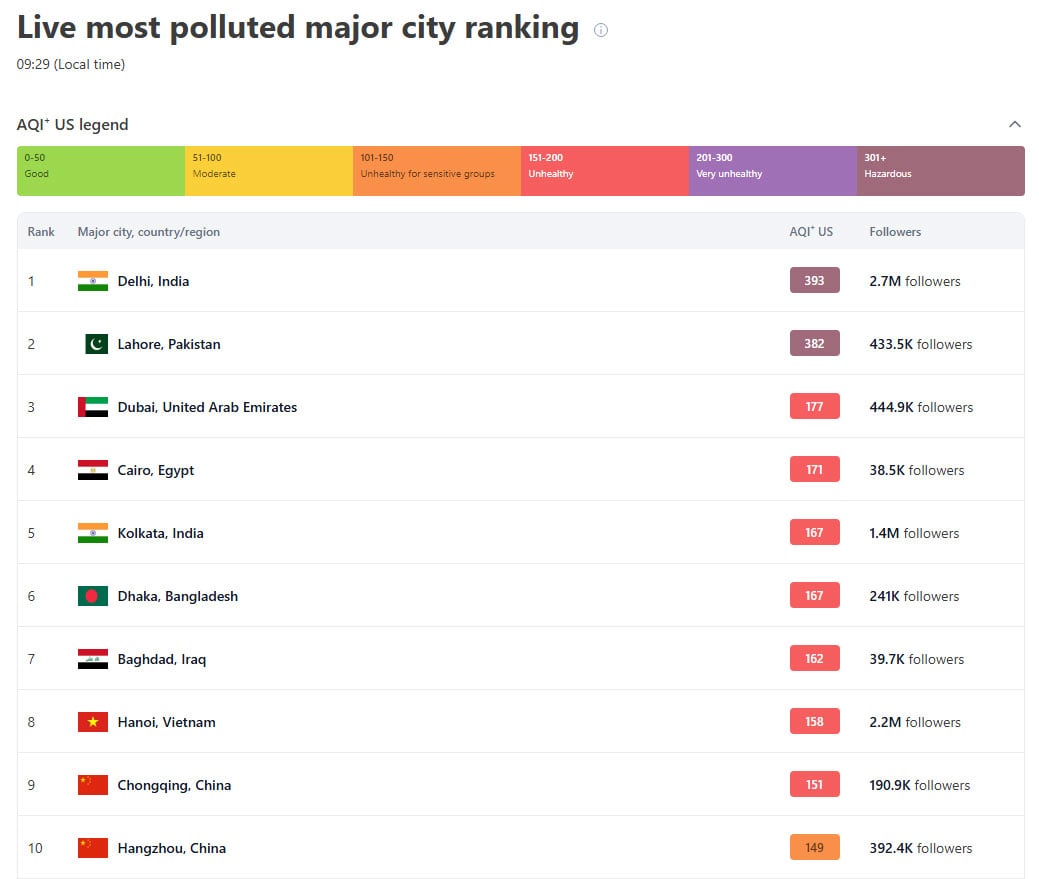
- Lahore’s AQI ranking is 382 in the list of most polluted cities in real time.
- Unusual pollution levels are prompting authorities to take emergency steps.
- Smoke-laden air from India contributes to increased smog levels.
Lahore ranked second on the list of most polluted cities in the world on Monday, with its air quality index standing at 382 as heavy smog persists in the Punjab capital despite efforts to bring down pollution levels.
The AQI index, which measures a range of pollutants, crossed 1,000 to an “unprecedented” 1,194 in the country’s second-largest city on Sunday – well above the level of 300 considered “hazardous” – according to data from IQAir, a Swiss air quality monitor. .
The concentration of deadly PM2.5 pollutants – the fine particles in the air that cause the most damage to health – reached 266 at about 9:30 a.m., 53.2 times higher than the level considered acceptable by the World Health Organization.
Unusual air pollution levels in Lahore have prompted authorities to take emergency measures, including closing primary schools for a week and imposing work from home.
In addition to closing schools, the government advised citizens to ensure that children wear masks, stay at home, keep doors and windows closed, and avoid unnecessary travel.

A ban has been imposed on three-wheeled vehicles known as rickshaws and construction in certain areas to reduce pollution levels, with a warning of the permanent closure of factories and construction sites that do not adhere to regulations.
With the provincial capital exposed to toxic air, other cities in the province are also witnessing a rise in pollution as a thick layer of smog covered Faisalabad last night.
As air quality continues to be “hazardous” in Lahore, the Punjab government plans to address the smog issue with India, whose capital New Delhi was at the top of the global pollution charts with its air quality index standing at 393 this morning.
A spokesman for the Department of Environmental Protection said that smoky air coming from neighboring India is contributing to the increase in smog levels in Lahore.
The weather forecast for the next six days indicates that wind patterns will remain the same.
Punjab’s Senior Minister Marriyum Aurangzeb, during a press conference on Sunday, described the situation as “unexpected” and attributed the deteriorating air quality to winds carrying pollution from the neighboring country.
“This cannot be resolved without talks with India,” she said, adding that the provincial government would ask the Foreign Ministry to use its diplomatic channels to start talks with New Delhi.
Punjab’s smog crisis, similar to the situation in the Indian capital, tends to worsen during the colder months due to temperature inversions trapping pollution close to the ground.
Last week, India called for regional cooperation and cooperation in South Asia to address the deteriorating air pollution dilemma, but there was no official comment.
Breathing toxic air has disastrous health consequences, with the World Health Organization saying strokes, heart disease, lung cancer and respiratory disease can occur due to prolonged exposure, especially for those who work outdoors.
Citizens toiling in the polluted air reported difficulty breathing, coughing and burning eyes, affecting their health and productivity.
Last week, the regional Environmental Protection Agency announced new restrictions in four “hot spots” in the city, banning the use of tuk-tuks equipped with polluting two-stroke engines and barbecues in restaurants without filters.
Pollution beyond levels considered safe by the World Health Organization shortens the life expectancy of Lahore residents by an average of 7.5 years, according to the Energy Policy Institute at the University of Chicago.
Children are particularly at risk because their lungs are less developed, they breathe more quickly, and they inhale more air for their size than adults.
Last month, authorities banned schoolchildren from exercising outdoors until January, and adjusted school hours to prevent children from traveling when pollution is most serious.
According to UNICEF, nearly 600 million children in South Asia are exposed to high levels of air pollution, and half of deaths from childhood pneumonia are linked to air pollution.
Additional inputs from Reuters and AFP
